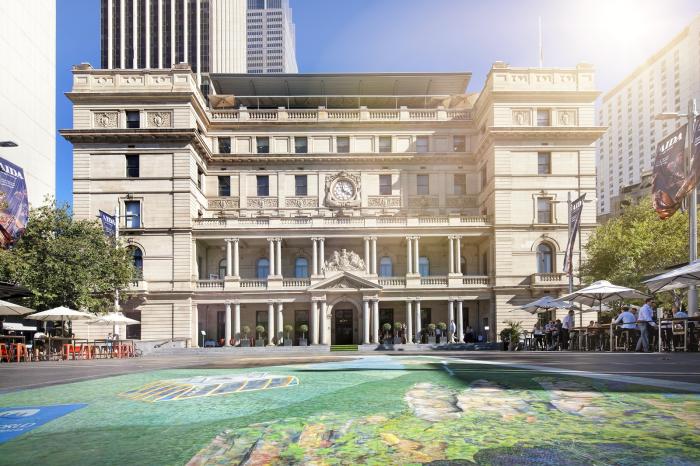Customs House |

Customs House, located in the citys Circular Quay area, is one of Sydneys historic landmark buildings, and has featured in the working and cultural life of the city since it was constructed in 1845.
Heritage is important to Customs House and the site. For over 150 years, Customs House played an active role as the primary trade gateway for goods and people flowing into Sydney and Australia and it continues to thrive in modern-day Sydney.
In the 19th and 20th centuries dual role of Customs was to raise revenue by taxing trade and to keep society physically and morally isolated from socially unacceptable goods, products, ideas and diseases.
The building served as the headquarters of the Customs Service until 1990. Ownership was then transferred from the Commonwealth Government of Australia to the City of Sydney Council in 1994, when it became a venue for exhibitions and private functions. In 2003, after refurbishment, it became the new home of the City of Sydney Library.
The ground floor of the building houses a 4.2m x 9.5m scale model of Sydneys CBD, viewed through a glass floor. The model was built by Modelcraft in 1998 and weighs one tonne. Images of the various versions of the building across its history are also displayed.
Customs House is located on a significant site where the local Eora people are said to have watched the First Fleet land. The Aboriginal flag is now permanently flown from the building.
For many years, Customs House was not only a focal point for trade but also the building and square in front of it provided a focus for major national celebrations. Today Customs House Square plays host to numerous cultural events and exhibitions.
History
People of the Eora tribe are said to have witnessed from the site, in 1788, the landing of the First Fleet. Convict David OConnor was hanged on the site in 1790 and it is said that his ghost haunts the Customs House to this day, offering people rum.
The driving force behind the construction of the original sandstone edifice on Circular Quay was Colonel John George Nathaniel Gibbes, the Collector of Customs for New South Wales for a record term of 25 years between 1834 and 1859. Colonel Gibbes persuaded the then Governor of NSW, Sir George Gipps, to begin construction of the Customs House in 1844 in response to Sydneys growing volume of maritime trade.
The building project doubled as an unemployment relief measure during an economic depression which was afflicting the colony at the time. (The new Customs House replaced cramped premises located in The Rocks). The original, two-storey Georgian structure was designed by Mortimer Lewis and featured large windows to afford a clear view of shipping activity in Sydney Cove. It opened for business in 1845.
The Customs House was partially dismantled and then expanded to three levels under the supervision of the Colonial Architect, James Barnet, in 1887. Various additions were made over the next century, particularly during the period of the First World War, but vestiges of the original Gibbes-Lewis building still remain.
❊ Address ❊
⊜ 31 Alfred Street Circular Quay 2000 View Map
✆ Telephone: 02 9242 8595
❊ Web Links ❊
➼ Customs House
➼ www.cityofsydney.nsw - Customs House
➼ Customs House - Wikipedia, the free encyclopedia
Update Page









